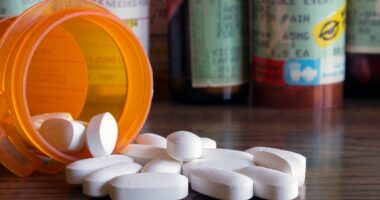Share this @internewscast.com

The placenta forms in the womb during pregnancy; it is delivered along with the baby when its function ceases. It is connected to a developing baby by the umbilical cord, through which the placenta provides oxygen and nutrients.
Shedding light on just how pervasive plastic consumption has become, a recent scientific study revealed something alarming: scientists discovered microplastics in every single human placenta that they tested during a study. It raises questions about the safety of babies in the womb, and how the plastic can impact developing fetuses. Dr Matthew Campen, regents’ professor in the University of New Mexico Department of Pharmaceutical Sciences, who led the study, said in a release from the university: “If we’re seeing effects on placentas, then all mammalian life on this planet could be impacted. That’s not good.”
What Is A Placenta?
The placenta is an organ that forms in the womb during pregnancy; it is delivered along with the baby when its function ceases. According to the Mayo Clinic, it is connected to a developing baby by the umbilical cord, through which the placenta provides oxygen and nutrients. It also removes waste from the baby’s blood. The placenta is mostly attached to the wall of the uterus — to the top, side, front or back. Rarely, however, it gets attached to the lower area of the uterus, thereby blocking the cervix that connects the uterus to the vagina. If the placenta is near the opening of the cervix, it is known as a low-lying placenta. If it partly or totally covers the opening of the cervix, it causes a condition called placenta previa.
What The Research Found
During the research, Dr Campen and his team analysed 62 donated placentas, and found microplastics in every single one of them. The university said that polyethylene — used to make plastic bags and bottles — was the most common plastic that made up 54 per cent of the microplastics.
According to a People report, this report follows another new study published Wednesday in the New England Journal of Medicine that has linked ‘nanoplastics’ with an increased risk of heart attack or stroke. “Patients in whom [microplastics and nanoplastics] were detected within the atheroma (a fatty substance in the artery walls) were at higher risk for a primary end-point event than those in whom these substances were not detected,” the study mentioned, adding that those with plastic tissue in their heart were at a ‘ higher risk of a composite of myocardial infarction, stroke, or death’.
What Are Nanoplastics?
According to the National Library of Medicine, microplastics (MPs) are plastic particles with a diameter less than 5 mm, while nanoplastics (NPs) range in diameter from 1 to 100 or 1000 nm (nanometer).
‘It’s Getting Worse’
Dr Camden was also quoted as saying in his statement: “It’s only getting worse, and the trajectory is it will double every 10 to 15 years. So, even if we were to stop it today, in 2050 there will be three times as much plastic in the background as there is now. And we’re not going to stop it today.”
For more articles visit our Diseases and Conditions Section. Follow us on Facebook and Twitter for all the latest updates! For daily free health tips, sign up for our newsletter. And to join discussions on health topics of your choice, visit our forum.











